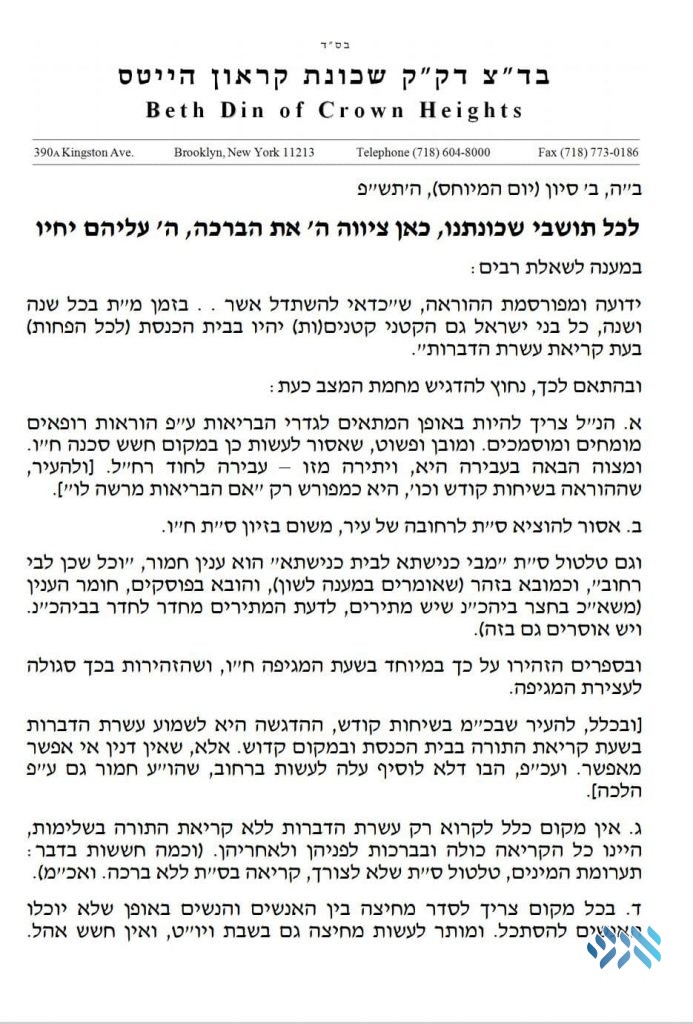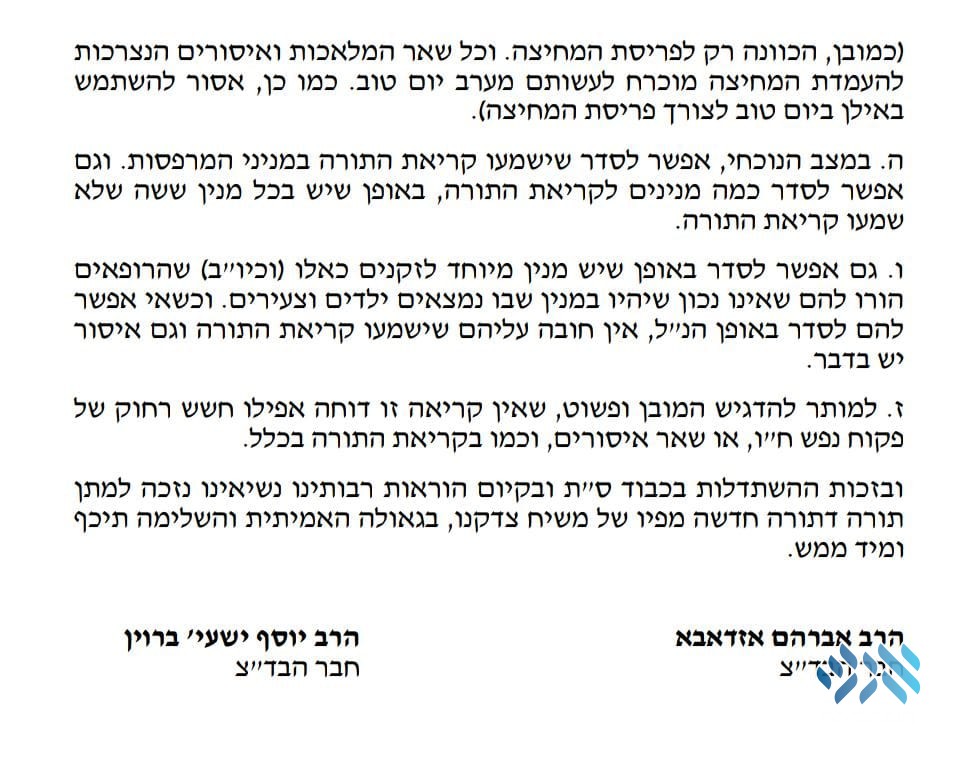The Beis Din of Crown Heights released a letter saying that bringing a Sefer Torah to the street is forbidden, and giving options how to assure that all could hear Asseres Hadibros on Shavuos.
By Anash.org reporter
Harav Avraham Osdoba and Harav Yosef Braun of the Crown Heights Beis Din released a letter on Monday with instructions what to do, and what not to do, in order to make sure that every resident of Crown Heights hears Aseres Hadibros this Shavuos.
“Firstly, everything must be done in accordance with the directives of the health professionals. Reading Aseres Hadibros in a situation which can bring to danger is not a mitzvah, rather an aveira,” they said.
They then laid under what circumstances Halacha permits moving a Sefer Torah, and when halacha forbids it.
“To take a Torah into the street is absolutely forbidden,” they write. “In seforim it says that one should be extra careful about this during the time of a pandemic.”
The Rabbonim suggest that the Sefer Torah be read on a porch or in a private lot, as has been done with the ‘block minyonim’ until now.
The following is the full text of the letter:
BH, 2 Sivan, 5780
To all members of the community שיחיו
In response to numerous inquiries:
It is well known the Rebbe’s directive that everyone, including small children, should attempt to be in shul on the day of Matan Torah, at least during the reading of Aseres Hadibros.
Accordingly, it is important to stress, due to the current situation:
- The above must be in accordance with the health guidelines of professional expert doctors. Obviously, it’s forbidden to do so wherever there is any risk of danger חס ושלום, as this would fall under the category of a Mitzvah fulfilled through a Aveirah, or worse, just a Aveirah רחמנא ליצלן.
[It should be noted that the Rebbe originally specified that the above directive be followed only in a situation where one’s health allows it.] - It is Forbidden to take a Sefer Torah to the street, being that it is considered a disgrace to the Torah.
Even transferring a Sefer Torah from one Shul to another is a severe matter, and certainly if it’s carried outside, as explained in the Zohar (recited as part of the text of the Maaneh Lashon). [Some opinions allow moving a Sefer Torah to the Shul’s courtyard, as they also allow moving the Torah from one room to another. Others forbid this too.]
Many Seforim make special mention to be extra cautious in this matter during a plague and how this is a Segulah to stop the plague.
It should be noted that a key emphasis in the Rebbe’s sichos is the reading of the Torah in Shul, in a holy place. Obviously, where this is not possible the Torah must be read out of the Shul premises. However, one should not add to this the reading the Torah in the street which is a severe prohibition.
- The entire Kriah most be read, with Brachos before and after, and not just the Aseres Hadibros.
- A complete and proper non see-through Mechitza must be set up between the men and women. (A Mechitza may be put up on Shabbos and Yom Tov. This refers only to the actual putting up of the Mechitza. Any necessary Melachos involved in setting up the Mechitza must be done before Yom Tov. One may not use a tree on Yom Tov to put up a Mechitza.)
- In the current situation, it is possible to arrange Minyanim for Kriah at the porch Minyanim. Multiple Minyanim may be arranged as long as there are six men in every Minyan who did not yet hear Kriah.
- Separate Minyanim can be arranged for the elderly and the like who can not attend a regular Minyan (with children and younger people) in accordance with doctor’s instructions. If this is impossible, they are exempt from hearing Kriah, and it’s also an Issur.
- Obviously, this Kriah does not suspend even the smallest risk to human life or other Isurim, just like regular Krias Hatorah.
In the Zechus of all this may we merit to hear Torah Chadosha from Moshiach Tizdkenu now Mamosh.


